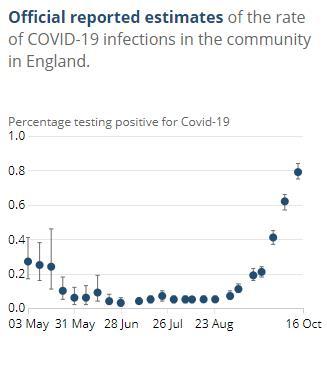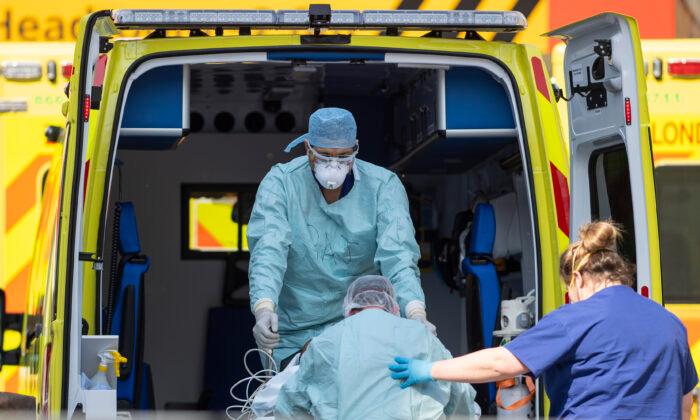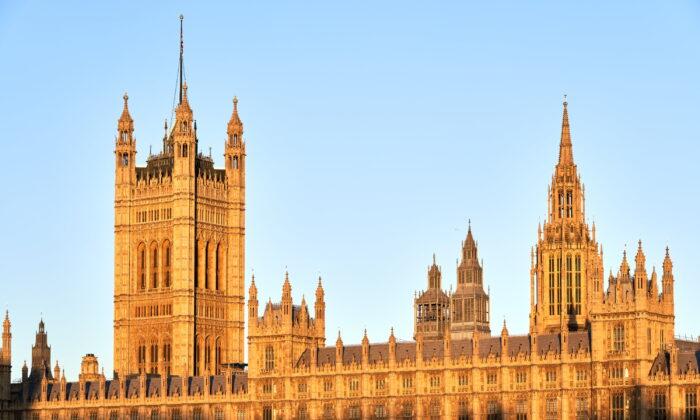An estimated 430,000 people in England were infected with COVID-19 during the course of last week according to the latest flagship survey for the government.
That’s one third up from the previous week’s figures. When compared with the last several weeks, however, it suggests that the recent surge in cases is losing momentum.
Between the first week and second week of October, estimated infections doubled. Over the following week, however, they increased by only two thirds, according to ONS data.
“There has been growth in COVID-19 infection rates in all age groups over the past two weeks including those aged over 70 years,” said ONS in a statement.
Rates are currently highest in older teenagers and young adults.
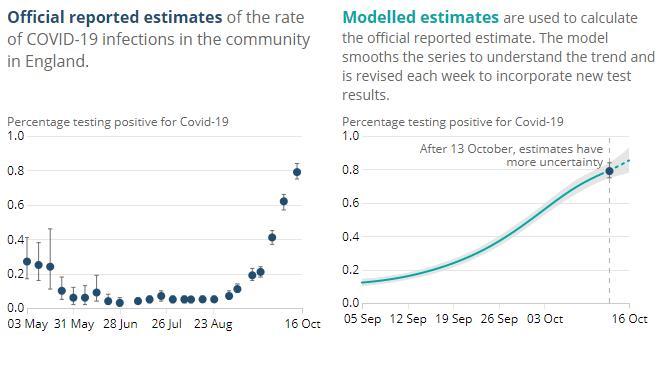
The areas with the highest infection rates are the North West, Yorkshire and The Humber, and the North East.
The data does not include people staying in hospitals, care homes, or other institutional settings.
These figures are based on scaling up from testing of a sample survey of the population.
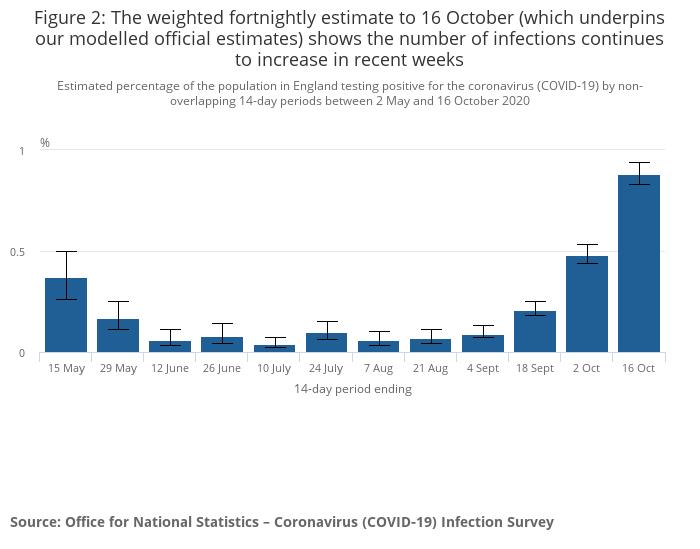
Total positive COVID-19 cases picked up by Track and Trace was just over 101,000 in a week in the latest figures. That’s compared to the 336,000 estimated by the survey methodology for the same week.
The R number is currently estimated at 1.2–1.4, meaning that the virus is growing in the population, down from 1.3–1.6 in the last estimate.
Specifically, the R number refers to the average number of people infected by a carrier.
The latest figures come as the government comes under pressure over the Test and Trace system which is struggling to cope with higher demand pushed by rising cases.
He said that the UK has carried out 26 million tests in total—more than any other European nation—and was on track for a 500,000 per day capacity by the end of the month.
